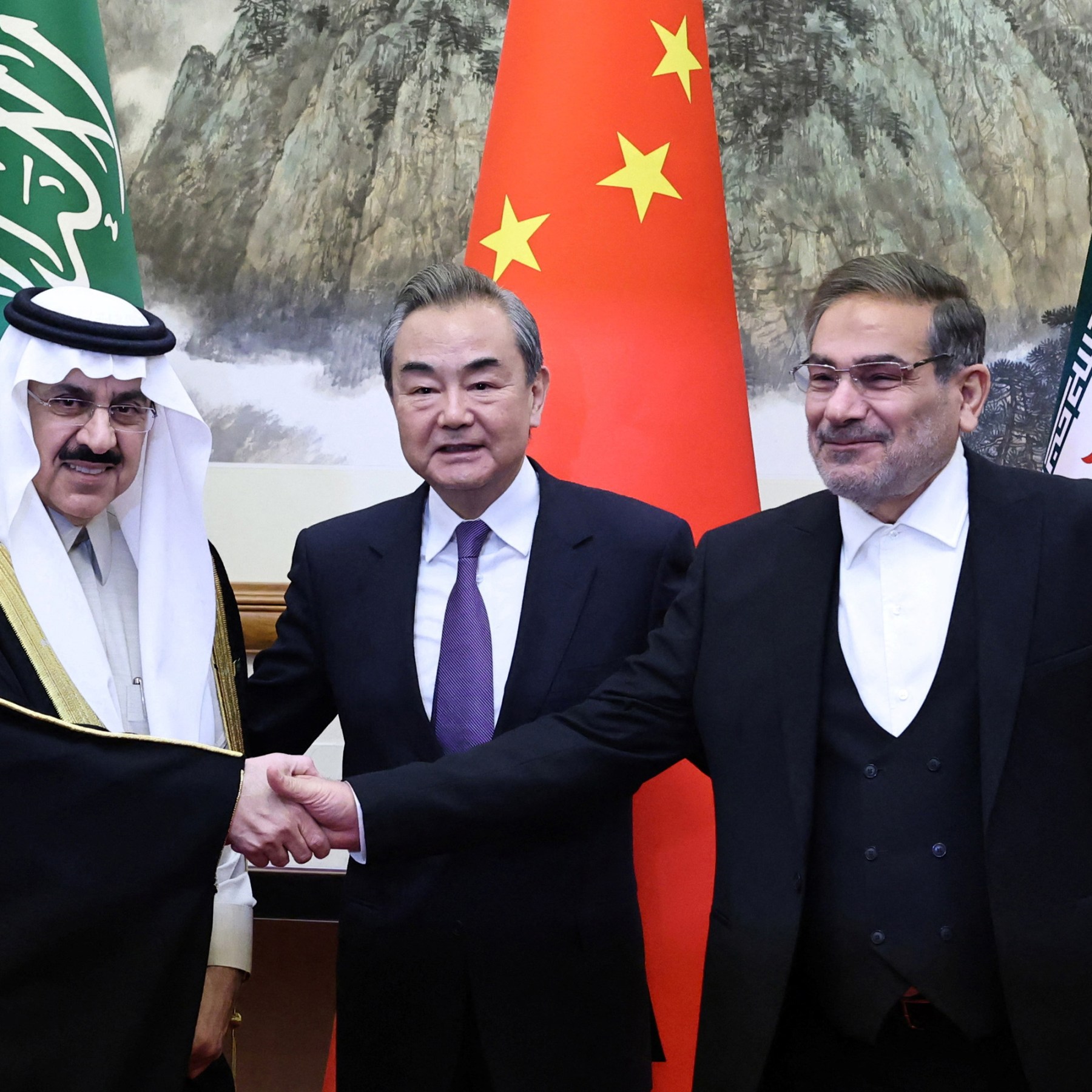
by Khalid Iqbal 9 Deecmber 2023
In the aftermath of the Israel-Hamas conflict, a notable shift has been observed in Saudi-Iran relations, particularly in their shared stance on the Palestine issue. Both nations, traditionally regional rivals, have exhibited a degree of warmth in their interactions, emphasizing the importance of unity in addressing the challenges faced by the Palestinian people. The common ground on the Palestine question has become a focal point for diplomatic discourse, reflecting a nuanced approach to regional dynamics. This convergence of views underscores the potential for diplomatic reconciliation and cooperation between Saudi Arabia and Iran, paving the way for a more stable and collaborative Middle East.
Saudi Arabia and Iran have stood as formidable rivals in the Middle East for a long time. This complex and multifaceted rivalry, rooted in religious, political, and regional differences, has been a key driver of conflicts throughout the region. Proxy wars, diplomatic standoffs, and heightened tensions have characterized their relationship. From the Yemeni civil war to the Syrian crisis and broader regional power struggles, the impact of this rivalry has been profound.
The historical rivalry between Saudi Arabia and Iran has been deeply ingrained, characterized by a complex web of religious, political, and regional tensions. This rivalry has played out in various forms, from proxy wars to diplomatic confrontations. Key conflicts, such as the Yemeni civil war, the Syrian crisis, and broader regional power struggles, have only fueled the flames of discord. However, recent developments have signaled a potential shift in the dynamics of this rivalry, offering a glimmer of hope for a more peaceful Middle East. The growing rapprochement between Saudi Arabia and Iran has garnered global attention, raising prospects for reconciliation and stability in the region.
Shifting Regional Dynamics
One of the primary factors driving the rapprochement between Saudi Arabia and Iran is the recognition that prolonged hostility serves neither nation’s interests. Both countries face significant challenges, including economic pressures and domestic concerns. In this context, the allure of regional stability becomes increasingly appealing.
The Role of International Actors
International players, including the United States, Russia, and the European Union, have actively encouraged dialogue between Saudi Arabia and Iran. Diplomatic efforts and pressure to end proxy conflicts have created an environment conducive to reconciliation. The involvement of global actors has added momentum to the thaw in relations.
Economic Incentives
Both Saudi Arabia and Iran acknowledge the economic benefits that cooperation can bring. The economies of the region, heavily reliant on oil, stand to gain from increased trade and investment opportunities. These prospects offer the potential for economic growth and enhanced stability.
Positive Impacts on Regional Stability
One, reduced proxy conflicts: As Saudi Arabia and Iran ease their rivalry, the likelihood of proxy conflicts in the region diminishes. This shift opens the door to de-escalation and increased prospects for diplomatic solutions in ongoing conflicts. Two, the potential for diplomatic solutions: The newfound willingness to engage in dialogue creates opportunities for diplomatic solutions in regional crises. Mediation efforts and negotiations are more likely to succeed when these two influential players cooperate. Three, strengthened regional alliances: The rapprochement could pave the way for the formation of stronger regional alliances aimed at addressing common challenges, such as extremism and terrorism. Collaborative efforts become more feasible in an atmosphere of cooperation.
Economic Opportunities
Increased Trade: Enhanced trade between these nations stands to benefit both. Iran’s vast market and natural resources complement Saudi Arabia’s economic strength, creating opportunities for mutually beneficial economic cooperation.
Collaborative Economic Projects: Joint infrastructure projects, energy initiatives, and trade partnerships could spur economic growth in the region. The development of shared projects may incentivize other Middle Eastern countries to participate, further enhancing regional stability.
Humanitarian Cooperation
Easing of Restrictions: A warming relationship may lead to the easing of travel and pilgrimage restrictions. This would allow millions of Muslims to access religious sites and contribute to people-to-people interactions, fostering understanding and goodwill.
Humanitarian Initiatives: Saudi Arabia and Iran could collaborate on humanitarian initiatives, addressing issues such as refugees, healthcare, and disaster relief. Joint efforts would demonstrate their commitment to regional stability and human welfare.
Conclusion
The rapprochement between Saudi Arabia and Iran represents a historic opportunity for lasting peace and stability in the Middle East. The factors driving this warming relationship, including shifting regional dynamics, international diplomacy, and economic incentives, are potent catalysts for change. Reduced proxy conflicts, the potential for diplomatic solutions, and economic opportunities all contribute to a more stable region. However, challenges and obstacles persist, including skepticism and ongoing regional conflicts. Overcoming these hurdles will require sustained diplomatic efforts, a commitment to dialogue, and a focus on common interests. The Middle East has endured decades of turmoil, but the KSA-Iran rapprochement may herald a new era of cooperation and prosperity, benefitting the entire region. As the world watches these developments, cautious optimism for a brighter future in the Middle East emerges.
Khalid Iqbal is a BS student at NUML, Islamabad.
